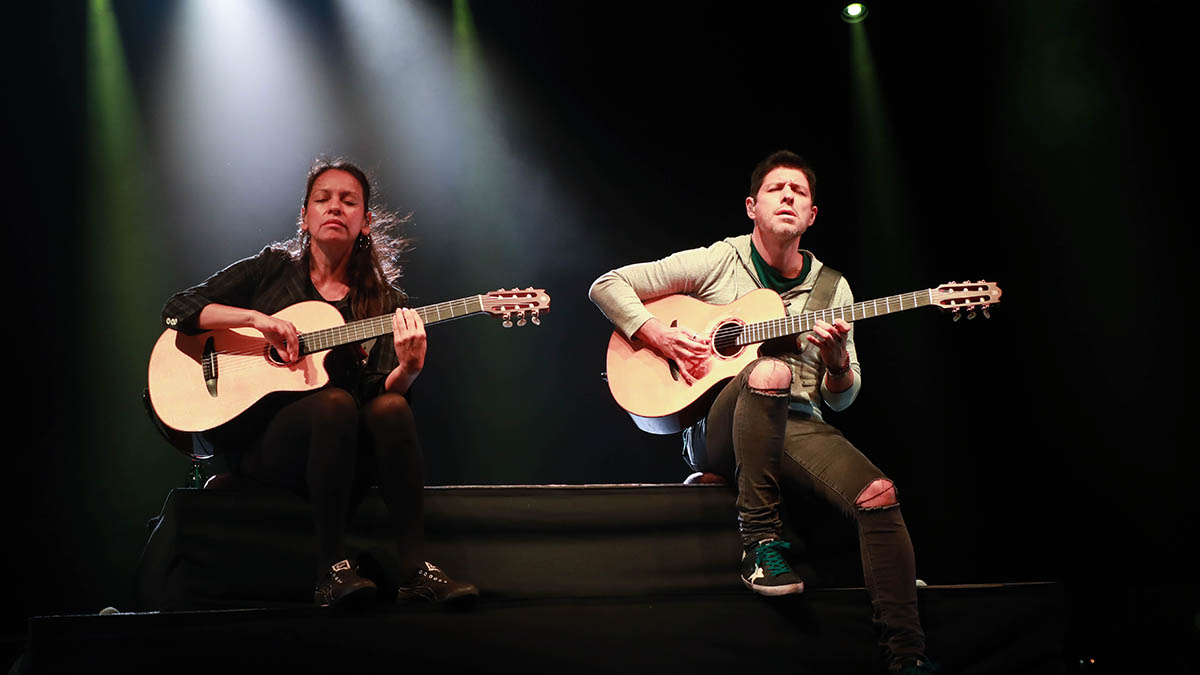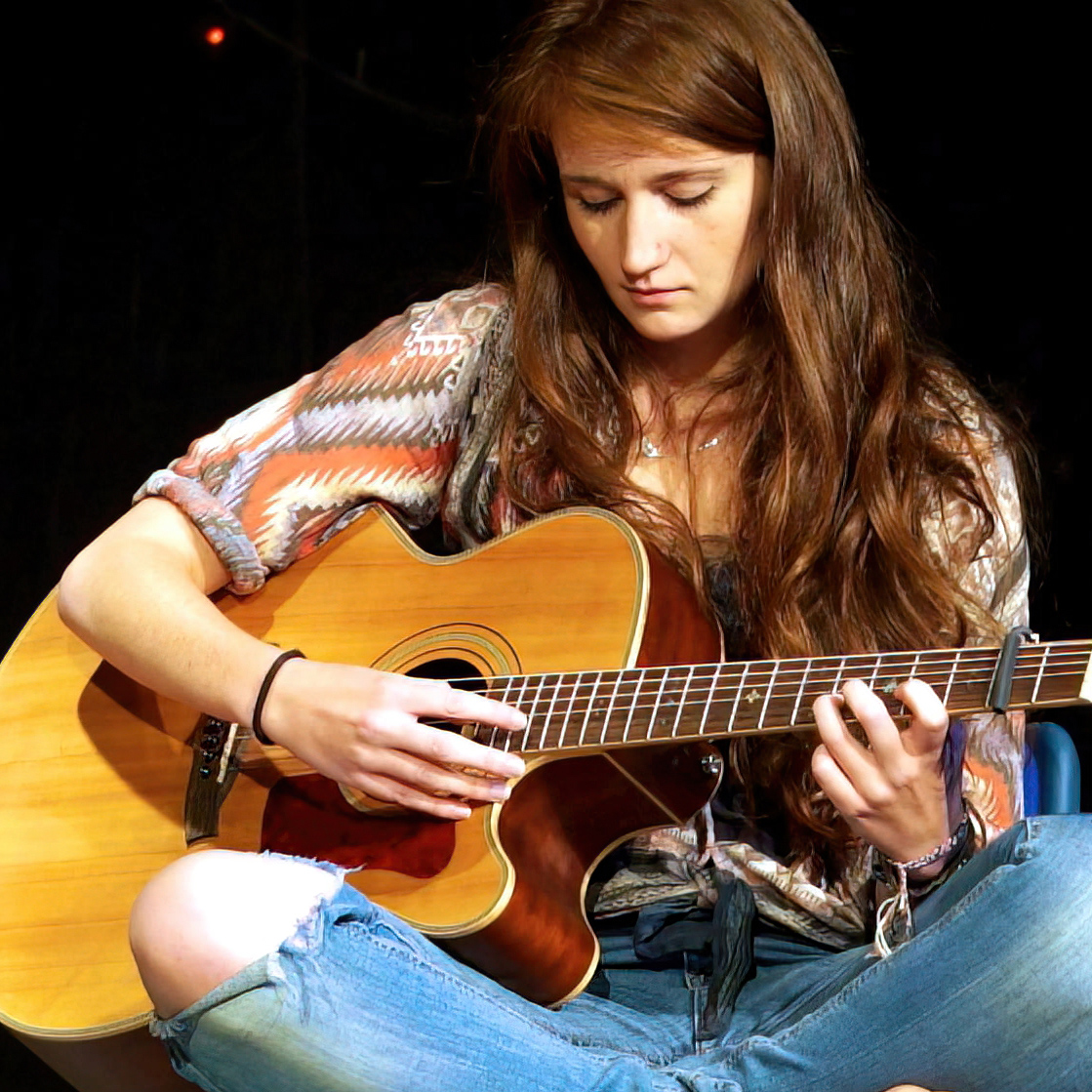Rodrigo y Gabriela: “It wasn’t until I got the acoustic that I started to shred more. I felt like I could play faster. With the electric, I wasn’t really attracted to it”
The Mexican duo’s Rodrigo Sánchez explains how the electric guitar slows him down, and why he and Gabriela Quintero are using backing tracks for the first time as they tour expansive new album In Between Thoughts... A New World

Two decades ago, Rodrigo y Gabriela made a name for themselves as innovators of the nuevo Spanish guitar sound.
Coming from a shared background in heavy metal, they could thrash as hard as Hetfield, shred as fast as Vai, and yet – somehow – they could take these ferocious chops and meld them with the traditional rhythms and flavours of the folk music they grew up hearing in and around their native Mexico City to create something beautiful, progressive and unique. They brought their instrumental fury to vast festival stages. They made nylon-string guitars cool.
Now, 17 years, six studio albums and one Grammy later, their impulse to break new sonic ground remains as strong as ever – as illustrated in their new album In Between Thoughts... A New World.
Gabriela Quintero’s turbo-charged percussive techniques still provide the backbone of the duo’s signature sound, but this time around, Rodrigo Sánchez has downed his custom Yamaha NTX Series and gone electric.
Speaking from their studio in Ixtapa, Mexico, Rodrigo describes the new album as “a natural progression” from 2019’s Mettavolution.
“I wanted to play electric guitar,” he says, “and I’d been doing that on the little part of the Mettavolution tour that we got to do before it was shut down, because some of the songs on the album were recorded with a Jaguar. But, for this sound, when Gab and I were just sitting and suddenly writing a song, it was because I had my electric with me.”
The word “suddenly” here is an important one, because another key point of departure from their typical process was that they approached the entire project with a spirit of spontaneity, conjuring the guitar parts for each of the album’s nine tracks through improvisation, before hitting the record button just moments later.
Get The Pick Newsletter
All the latest guitar news, interviews, lessons, reviews, deals and more, direct to your inbox!
The longstanding connection that has made Rodrigo y Gabriela one of the most captivating guitar partnerships of their generation has always been equally to do with their solid intuition for knowing how best to interact musically, and something intrinsically deeper than that. They’ve both always, as Rodrigo puts it, been “spiritual seekers.”
When you leave all the expectations behind, and you just allow this awareness to be more present in every action, that’s pretty much what art is all about
Rodrigo Sánchez
Consequently, their desire to explore spontaneous composition came not from wanting to jam or noodle in the sense that many guitarists understand improvisation, but from wanting to allow a heightened sense of spiritual awareness – inspired by the slightly slippery philosophical concept of nondualism – to seep into their creative process and flow back out in song form.
Rodrigo opened his mind to the nondualist way of thinking in 2020, and as he explains: “It’s basically an interconnection between the mind and this kind of matrix where all the information of whatever we perceive is. It kind of shifted my perception of reality. When you leave all the expectations behind, and you just allow this awareness to be more present in every action, that’s pretty much what art is all about.”
In fact, when Rodrigo y Gabriela first started experimenting, they had no expectation that a release would ensue. As Rodrigo recalls: “When we recorded, we were not thinking that this was going to be the next Rod & Gab album, and that gave us this limitless space to work and add different things that we probably wouldn’t have, had we known that it was going to be.”
As well as diverging into electric tones, the album also features the subtle use of analogue synths, Mellotron and even the entire Bulgarian Symphony Orchestra to further accentuate its dynamic drama with strings and percussion. “We decided that we should add the orchestra,” he says, “because it’s cinematic and it is, in a way, the soundtrack to a story we wrote based on the nondualist philosophy.”
While these new elements might seem like a wild leap from the twin nylon string sound we know and love, Rodrigo is quick to remind us that the fundamentals of their craft remain unchanged.
“Our music can be experimental,” he notes, “but at the same time, the metal world we grew up in and all the rock we used to listen to when we were kids is really straightforward. We don’t come from a jazz background where we want to overcomplicate things. The songs are actually songs. The melodies and the structures are very clear. Even when we were working with the orchestra and the arrangements, we were trying to be minimal, and let the Rod & Gab sound still be there.”
While revered for his intricate lead work, Rodrigo also refrained from using the electric landscape as an excuse for gratuitously flexing his speed chops, revealing that – actually – that was never his style, even as a young metalhead.
“It wasn’t until I got the acoustic that I started to shred more,” he says. “Maybe I was influenced by The Guitar Trio with John McLaughlin, Al Di Meola and all those guys. I felt like I could play faster here. But with the electric, I wasn’t really attracted to it.”
His electric of choice is a Fender Jaguar, but he stresses that he “didn’t use it to shred in any way,” and – as a nod to his maturing sensibilities – he emphasises: “With every song I play, I try to do less notes. Even on acoustic, my time of playing fast is gone.”
One of the greatest revelations of the record is that when Rodrigo shifts his usual playing style directly onto the Jag, it becomes seriously funky. Tracks like True Nature and Egoland pack so much Nile Rodgers-esque syncopated goodness that involuntary grooving is an inevitability of listening.
“I kind of discovered that myself in Mettavolution,” he smiles. “I started to include these funky guitars, but it’s not new. When I was playing acoustic guitars, I’d been doing those rhythms for many, many years. But, sonically, it’s not the same. I really love the feel, and I love playing those rhythms with that sound. I don’t think I do the typical patterns of funky guitar because I don’t even know how to play them. But, I think they give a good reference.”
Similarly, there’s a subconscious channelling of Ennio Morricone’s desert guitars on the evocative Descending To Nowhere, and on heavier tracks like Broken Rage, clean tones give way to levels of distortion and feedback squawkery that we’ve never heard from the duo before. Naturally, by moving into the electric realm, Rodrigo was afforded a whole new palette of effects with which to paint the sonic story.
But rather than going wild in the pedal shop, he used his long-favoured Fractal systems and a variety of self-designed plugins to hone the exact sounds he was after for each track.
For example, for the squidgy, quacky groove at the beginning of Egoland, he reveals that it’s “not an auto-wah for real,” but rather something he engineered at the desk when no pedal in his collection would suffice. “I do use one live but it didn’t sound good, it sounded too obvious,” he says.
Looking ahead to how they’ll perform the album during their extensive world tour, which runs from April through to November, Rodrigo y Gabriela are aiming to deliver the kind of awe-inspiring duo shows for which they are famed without compromising on the record’s ambitious sonic scope.
“We are going to – for the first time – use backing tracks,” he says. “The sound is pretty big and full, so the whole production is changed and we have visuals that are synced to all the songs to portray the concept of the album.”
The open-minded spirit that birthed the record will be carried through to its on-stage incarnation. As Rodrigo concludes with a smile: “We’re excited to do things differently.”
- In Between Thoughts... A New World is out now via ATO Records.
Since graduating university with a degree in English, Ellie has spent the last decade working in a variety of media, marketing and live events roles. As well as being a regular contributor to GuitarWorld.com, she currently heads up the marketing team of a mid-scale venue in the south-west of England. She started dabbling with guitars around the age of seven and has been borderline obsessed ever since. She has a particular fascination with alternate tunings, is forever hunting for the perfect slide for the smaller-handed guitarist, and derives a sadistic pleasure from bothering her drummer mates with a preference for wonky time signatures.



![[from left] George Harrison with his Gretsch Country Gentleman, Norman Harris of Norman's Rare Guitars holds a gold-top Les Paul, John Fogerty with his legendary 1969 Rickenbacker](https://cdn.mos.cms.futurecdn.net/TuH3nuhn9etqjdn5sy4ntW.jpg)







